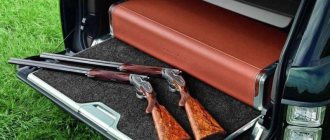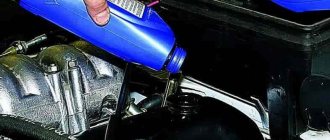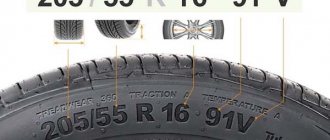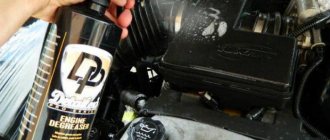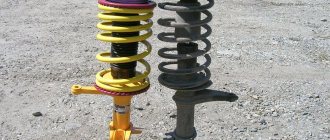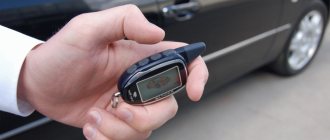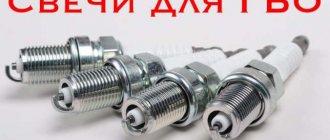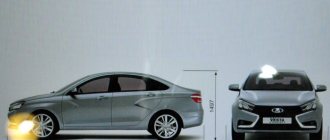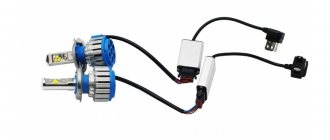How to choose a car seat for a child?
First of all, let’s determine what types of car seats there are by age:
- Group 0 – 0-10 kg, 0-6 months. The cradle is used, sideways, with your feet towards the door.
- Group 0+ – 0-13 kg, 0-1 year . Can be used as a carrier chair.
- Group 1 – 9-18 kg, 9 months-4 years. For a sitting position, in the direction of travel.
- Group 2 – 15-25 kg, 3-7 years. Installation in the direction of travel.
- Group 3 – 22-36 kg, 6-12 years. The main advantage is compactness.
3 groups and a universal option
Basic tips for choosing a car seat:
- Take into account not only the baby’s age, but also his weight and even height.
- It is best not just to take the necessary measurements of the future passenger, but to go to the store with him. There is a demo stand where you will see how comfortable the baby will be, and you will also find out on the spot whether this seat is suitable for your car.
- Try to secure the car seat, carefully check whether the belts are comfortable, whether they have fasteners, whether the fabric pads on the locks are elastic and wide, and whether the lock is locked so that the baby does not open it on his own on the way.
- A guarantee of compliance with strict European safety standards and passing all tests is the presence of the ECE R44\03 or ECE R44\04 on the belt. Without it, there is reason to doubt the safety of this car seat.
- Side protection must be installed! It protects neck, head and shoulders in case of a side impact, which, unfortunately, is not uncommon.
- Overall safety largely depends on the strength of the frame. Metal is stronger, but it is quite heavy. If you don’t want to have extra weight in your car, choose a frame made of primary processed plastic , it is much stronger.
- And, of course, do not buy a car seat for your child at dubious points of sale, but go to a company store. There, of course, it is more expensive, but much more reliable in terms of safety. And also - a huge selection, the opportunity to consult an expert, the availability of certificates and the opportunity to try out the purchase at a demo stand.
- You shouldn’t look for a used baby car seat at a cheaper price. It may have hidden defects and be sold after an accident (although by law it must be disposed of).
Pay attention to these tips
Carrying chair group 0
Models in this group are designed for children from 0 to approximately 1.5 years. In the carrier chair, the newborn is positioned at an angle of 30-45 degrees, which allows the child to lie down and breathe freely during the trip
In addition, such devices take up less space in the car than cradles, which is very important if you have a large family and you need to choose a compact model
Carrying chairs are secured with standard seat belts, strictly with the back in the direction of travel. This position of the child is associated with safety - his head is quite large in relation to the size of his body, the spine is still flimsy, and the muscles are not strong enough. The slightest jolt, sudden braking or collision can lead to tragedy. When the baby is positioned with his back to the direction of travel in the above cases, he will not jerk forward by inertia, but will gently press into the car seat.
Carrying chairs have special convex bolsters that hold the child’s head from the sides, preventing injury. The baby himself is fastened to his seat with belts.
Due to the fact that the seats are mounted in the safest position - against the direction of travel, manufacturers reduce the weight of the devices, but it is still 3-5 kg. If you add the weight of the child to this value, you get a rather heavy burden, with which running around the shops is not at all comfortable. In many European countries, children under 2 years of age are required to ride only with their back to the direction of travel. Statistics show that in these countries, child mortality from road accidents is very low. In Russia, after “outgrowing” group 0+, the child is transferred to group 1 chairs, which are attached in the direction of travel. Often, if a child is large or plump, or wears bulky clothes in winter, he no longer fits in a 0+ chair even before his muscles and spine are sufficiently strong. His parents buy him a Group 1 restraint, putting his life in danger.
Where to attach a car seat in a car for a child?
Features of securing a car seat primarily depend on the age of the baby.
- Group 0 and 0+ is also a car seat ; it is mounted in front, against the direction of the car. The fastening system is Isofix, or stationary car belts. In this case, the airbag must be switched off.
Correct fastening
- For other groups, the correct installation point is the rear seat.
There are 3 options for installing a car seat: behind the driver's seat, behind the passenger seat, in the middle.
- The third option is a universal method, used up to the age of three. is surrounded on all sides , which in the event of an accident will take the impact and protect the baby. In addition, adults can be located next to the baby, even on both sides, which will allow them to observe him, entertain him and pay attention - at this age it is still difficult for a child to remain alone with himself for a long time.
- When the seat is located on the passenger side, the child is also in a fairly safe zone ; he is in danger only if he is hit on the right side, which does not happen so often. Suitable for groups 1 and 2. An adult can also sit nearby, but at this age children do not require so much attention; they will willingly occupy themselves with a toy, tablet, or phone. It is convenient to seat a baby in a seat on the sidewalk side, but an adult, who will sit next to him in the back, has to go around the car and sit down from the roadway.
- The option of attaching a seat behind the driver's seat is relevant for older people, groups 2 and 3. Such children are already able to climb onto the seat on their own; adults only need to check that the belts are fastened. Parents calmly sit in front - at this age, children do not require the presence of an adult nearby, but prefer to do without him.
Advantages of the car seat installation location
Useful tips
Manufacturers of seats for transporting children in cars provide their products with detailed instructions. However, this is not enough. Therefore, we suggest that you familiarize yourself with a number of useful tips that will help make your trip with your child even more interesting and safe. At the product selection stage, you should remember important things:
- It’s better to go shopping with a child and a car;
- In no case should you purchase a model that does not have enough belt length for fastening;
- It wouldn't hurt to ask the seller for advice.
The first point will help you avoid mistakes with your choice. If you have questions about modification, you can immediately dispel all doubts. As for contacting a consultant, this will allow you to finally establish yourself in the correctness of your own choice. When using a car seat, there are important details to remember:
the child must be fastened while driving; he must have an acceptable level of freedom; A child seat requires periodic care; it is very important to assemble it correctly after washing or cleaning.
To learn how to install a child car seat from up to 36 kg, see the following video.
How to secure a car seat in a car with belts?
For the safety of your baby, it is necessary not only to make the right choice of device, determine the location of its attachment, but also to correctly secure the car seat with belts. An incorrectly installed seat will not save you in an accident, but will cause significant injury. Take this moment very seriously.
It is also important to secure the seat correctly - otherwise injuries cannot be avoided.
The following methods can be used to install a car seat:
- Stationary car seat belts
- Isofix system
- Latch or SuperLatch system
Every car is equipped with a stationary standard three-point belt; it is a universal and inexpensive tool. With it, the chair can be installed without problems on any of the seats. However, its installation is quite complicated, and if the chair is equipped with a table, then there may simply not be enough belt. And the security of such a mount is not very high.
When using this method, it is important to remember the following:
- Car seat belts do not guarantee rigid fixation of the car seat for a child, but still it should not wobble, play is acceptable within 2 cm.
- It is necessary to adjust the belt tension after the small passenger is seated in the seat. The fabric cannot be twisted, sagging, or fit too tightly. The best gap between the belt and the child's body is about 3-4 cm - 2 fingers.
- Install a fastener on the belts so that they do not stretch or slip while driving.
- The tape should go through all the guides and be located at the level of the child’s shoulders and hips. Under no circumstances should the belt be at the level of his neck.
In the rear seat
Installing a car seat in the rear seat is as follows:
- Place the car seat on the seat. According to the instructions for the car seat, guide the belt strap through the special holes.
- Tighten the belt and lock the buckle.
- Press down on the chair and make sure it is well secured and there is no excessive play.
- Release the seat of the chair from the belt tape, place the baby in it, and fasten the belts.
- Keeping an eye on the pads, secure the locks.
Buckle up your child.
Remember, dear motorists, that the seat belts must fit well to the child’s body. This is the only way the child will be reliably protected in the event of an accident. If the straps holding your child in the car seat are loose, they will not be able to securely hold and protect the child in the event of a sudden stop or accident.
Here's what you should pay attention to first:
HEAD.
Make sure there is enough space between the top of your child's head and the top of the car seat. Remember that all chairs vary depending on the design type, brand and price range. To find out the exact distance that should be between the child's head and the top edge of the car seat, first read the instructions for the car seat, where such data should be indicated.
SHOULDERS.
Also make sure the straps fit snugly around your child's shoulders. To check how well the straps fit your child, place your finger under the strap near the collarbone and pull your finger up (out). If, by lifting your finger, you can secure the seat belt with your index finger and thumb, this means that the belt (shoulder belt) needs to be tightened further as it does not securely hold the child in the seat.
OTHERWISE. So make sure your baby's chest is also held firmly by the straps).
SMALL IN THE BACK. Also make sure the car seat's lower straps securely support your child's lower back and hips.
How to attach a baby car seat in a car?
A car seat is a car seat for children of group 0, it is used from birth to 6 months, and it provides for transporting the child lying down. It’s convenient and safe to ride in it, but for parents the following difficulties arise: the inability to later convert the device for older people, and the bulkiness of the design, which occupies the front seat, pushed back, thereby blocking the space behind the passenger, or two rear seats.
Securing it against traffic
If you still need to secure a child car seat in a car, proceed as follows:
- The device is fixed against the direction of the car, in a place near the driver, and the airbag is turned off.
- The cradle is secured with belts; the transverse and diagonal tapes should not be tangled.
- Adjust the tilt angle back, it cannot exceed 45 degrees.
- Use a special roller or rolled towel when provided by the manufacturer.
- Place the baby in the cradle , secure the straps by installing the clips at armpit level.
- Belts must have special pads to prevent chafing in the child's groin. Place a soft towel if there is no padding.
- Adjust the straps, they should not be tight and at the same time secure the baby. This is about two fingers between it and the belt.
- Measure the temperature in the cabin and, if necessary, cover the baby with a blanket.
Basic rules for installing a car cradle
- Installation for infants under 6 months is only permitted in front of the passenger seat;
- Mandatory disabling of the front passenger seat AIRBAG (side and front) when installing a car seat in front, next to the driver;
- The cradle must be attached strictly according to the instructions included with the kit;
- Be sure to check the angle of the crib, it should not be more than 45 degrees. Some manufacturers install a special indicator based on the type of building level, while others offer classic markings. This way you can determine whether the backrest is properly secured;
- Next, place the baby in the crib and secure it with straps;
- To prevent the belt from damaging your baby's delicate skin, use soft pads. Also provide a pad for your belt buckle or use a soft terry towel instead;
- Check that the straps are tight enough - the crumbs should not jump out, but at the same time they should not press on anything. Place two fingers under the straps - if they fit, the child will ride comfortably in this position even during a long journey.
Important! Before each trip, check the direction of the air conditioning vents - position them so that cold air does not enter the child.
How to attach a children's triangle in a car?
The child triangle is a special adapter that fits onto the seat belt and is used to fully protect the child. The fact is that an ordinary adult belt is suitable for a passenger over 150 cm tall and, if applied to children, it may not protect them in the event of an accident, but may injure them.
- This is because due to the child's small stature, the diagonal belt will pass in the neck area, which is very dangerous in the event of a collision. The triangle adapter moves the belt away from the neck and places it in the chest area, so it can protect a small passenger in an accident.
- Therefore, when there is no car seat, a child from 4 to 12 years old is transported using a triangle. It can be used not only in a personal car, but also in others, simply by putting it on an existing seat belt. This is very easy to do by simply passing the strap through the holes in the triangle and placing it on the baby's chest.
Attach the triangle if there is no chair
- Make sure that the straps are not twisted and that the material adheres well to the surface of the child’s body.
- However, keep in mind that using a triangle is not a solution to the situation, but rather a palliative. In the event of a serious accident, it does not protect as effectively as if you were using a car seat . Therefore, it is necessary to stock up on such an accessory, but you should not rely on it too much.
Safety regulations
The use of child seats is one of the rules for the safe operation of vehicles. The first requirement is choosing the right chair model. This rule requires compliance with:
- age, body weight, height of the child;
- Car model.
Strict compliance with current safety requirements will ensure comfortable movement, save people’s lives and health, money and time.
How to attach a car seat to the front seat?
Where to install a child seat? Is it worth installing it from the front? Please note that there is no prohibition on such installation. Subject to compliance with all laws, seats can be placed in the front.
And this has a number of advantages:
- Children are more willing to ride in the front seat - there is better visibility and they get the impression of participating in the movement.
- If there are no adults around besides the driver, then it is easier for the driver to control the child and talk to him.
- Seats in the back are freed up for other children and adults.
- There is less motion sickness here.
How to attach a car seat to the front seat, taking into account the category:
- 0 – baby seat. If you use a device removed from a stroller, you can only place it on the back seat, because the design does not allow it to be installed in the front.
- Group 0+ – mounted on the front seat with the back facing forward, secured according to the design of the car.
- Group 1 - can be located anywhere, in any position, while almost always parents prefer to seat the child facing forward.
- Groups 2 and 3 – here only a forward facing seat is possible. Use regular car seat belts.
In the front, the child feels like an adult.
With all the advantages of the front seat, it remains the most dangerous when traveling. Once you have chosen this place, follow these rules:
- Turn off the front airbag; it protects an adult well, but can injure a child. In this case, the side airbag cannot be turned off.
- Position the front seat with the car seat as far away from the dashboard as possible, closer to the rear seats
- Adjust the side view mirrors so that the high backrest of the child seat does not block your view.
Types of fastenings
Until recently, child seats were not a mandatory safety feature. There was only one requirement that the child be secured with belts. In any auto store you could buy a soft pad for a standard seat belt, which made it more suitable for a child.
True, such a system did more harm than good, and another disadvantage was that attaching a cradle with a baby was not easy, and in some cases impossible. We currently use two main types of child seat mounting:
- Standard car belt.
- Isofix fastening system.
Some models of child car seats allow you to use both. There is also a third type of fastening, although not often used in practice: latch, which, like Isofix, is attached to the brackets on the car.
How to secure a car seat in the back seat?
- The rear seats of the car are the safest for children. Moreover, the best place is considered to be the center of the rear seat, followed by the seat behind the passenger, and then behind the driver.
- to attach the car seat for your baby so that he rides facing the direction of the car, with his legs towards the rear seats. At the same time, his body is located reclining . Very young children's heads are usually large and heavy, and their necks are thin and weak. Therefore, it is very important to prevent large loads on these parts of the body, not only during accidents, but also during sudden braking.
- How to fasten a child car seat in the back? This can be done in three different reliable ways. When using any of them, always carefully read the installation manual, which will answer all your questions.
- Isofix, Latch or universal fastening systems that meet international safety standards. Most modern cars are equipped with them; they are reliable and safe.
- Installing them is very simple, just find the fasteners on the car seats and attach the car seat to them - all certified car seats are compatible with such connectors. We will talk about these systems in more detail later.
Fasten using special grooves
- Secured with installed seat belts. Installed in the absence of the above-mentioned fastening systems. For this case, car seats have grooves for the belt, and the instructions for your car contain an explanation of how to secure them (we also described above how to fasten the seat using belts).
- Use of fasteners. The method is similar to the previous one, but at the same time, clamps are also installed on the belt to block the car seat from wobbling. If the fabric is too long, an additional knot is tied on it, which makes it possible to shorten it
In all cases, the back seat is always preferable to the front. The exception is the car seat for group 0, which is placed on the front seat, which is moved back to the maximum.
Mounting methods: pros and cons
As a general rule, buckle or secure the car seat, preferably in the center of the rear seat, with the child sitting forward facing (not applicable to infant models). Currently, the range of the product under discussion is quite large. The entire set of car seats differs not only in colors and sizes, but also in mounting methods. A certain system of approaches and points of view has also developed on this issue. Currently, fixation methods are presented below.
Isofix
The most popular child restraint system for transportation in personal vehicles. This option is designed to attach the seat to the body at the rear of the vehicle. Fastening is carried out using special carbines. Stainless steel is used in the manufacture of the product. Direct connection to the vehicle body avoids damage to structural elements and injury to the passenger. Another positive side of this option is ease of use. To install, simply insert the chair into the grooves until it stops. This option is highly reliable.
The disadvantage is the lack of necessary fasteners in some cars. This means that such a seat cannot be installed on all cars.
Latch or Super Latch
Here everything happens the same as in the previous version. The difference is that a different type of strap is used. In the domestic open spaces, this option has not received due popularity.
Seat belts
Universal fastening method. In this case, the child seat must have special grooves. There are no general design requirements for such devices. So in this case, you should follow the instructions supplied with the accessory. A negative feature of the belt model is the considerable complexity of the installation process. There are also some differences in the geometry of a car seat and a car seat. This may cause inconvenience to all vehicle occupants.
The above methods of securing seats are sufficient to guarantee a standard level of safety. However, in addition to these, other options can be used. Most often this is an anchor belt or support.
Anchor strap
Dedicated additional support. Protects the structure from possible movement in case of sudden braking. By the way, it is the anchor product that is easiest to attach to a car sofa. You can do this yourself in just a few moves.
Despite the obvious positive aspects, this type of fastening has a serious drawback. The passenger's body weight should not exceed eighteen kilograms. If this rule is not followed, the system may not work!
Support
Instead of a belt strap, you can use a holder - a holder. It rests on the floor of the car and prevents the structure from moving. A stand can be described as a reliable way to secure a chair. However, the need to install it may require additional material and time costs.
The choice of any type of attachment is determined by the potential capabilities of the passenger and the vehicle.
Isofix mounting system: how to secure a child seat?
One of the best systems that allows you to properly secure a child car seat is the isofix system. This is an international certified system accepted throughout the world.
Fastening
The main advantages of isofix are the following:
- Most modern cars are equipped with it
- Easy to install and secured with special connectors.
- It is very difficult to install incorrectly.
- Features a very high level of protection.
- The car seat is secured very firmly , it does not wobble, regardless of whether there is a child there or not.
Isofix mount for car seat, how to mount:
- Find metal brackets between the back and seat of the car and remove the plugs from them.
- If your chair has bracket guides, install them onto the brackets.
- The armchair brackets must be pulled out and snapped onto the brackets.
- Also remove the existing plugs and hide them together with the seat plugs.
- Now all that remains is to place the child in the chair and secure it with the internal belt.
Schematically
It must be taken into account that this system is offered as the main one, and you can attach a car seat up to 18 kg, that is, groups 0, 0+, and 1, for children up to 4 years old. When your child has crossed this threshold, isofix can only be installed as an additional system, reinforced with devices. This is an anchor belt or a telescopic stop.
Types of child car seats
Before installing this car device, you need to make sure that it matches the child’s age and anthropometric parameters. Depending on the age category, car seats are conventionally divided into subgroups. They differ in the type of fastening (main and auxiliary), as well as the design features of the car seat body. In addition, each type of restraint device has a specific fixation location. The following types of chairs can be found on sale:
- Group 0+. Such infant carriers are used for infants whose weight does not exceed 12 kg. Chairs in this group, as a rule, have several fastening systems and auxiliary support supports.
- Group 1. Seats of this type are intended for young passengers from one to five years old, whose body weight does not exceed 20 kg.
- Universal group. This format of chairs is suitable for several age categories at once, so this device is often used for several years. Due to the fact that such a device has an advanced regulation system, it can be adjusted to the baby’s height. It is also possible to separately adjust the angle of inclination.
- Group 2–3 These car seats are only suitable for transporting older children weighing up to 40 kg.
Child car seat latch system
The latch system is an improved version of isofix. They are interchangeable, but latch appeared later and therefore has a number of improvements:
- The chair itself weighs less because it does not have a heavy metal frame, but has strong and lightweight straps.
- The system is not rigidly attached, but very effectively protects against body vibration and holds overloads in the event of an accident.
- Can be used for children whose weight significantly exceeds the isofix weight limit of 18 kg. This value for the latch is 29 kg due to the even distribution of the load when using elastic belts.
- The method of fastening the belts has been simplified; now there is no need to strictly follow the sequence of their fixation.
- It is possible to attach some latch models both along the direction of the car and in the opposite direction.
Fastening
The procedure for fastening the car seat is as follows:
- Find the metal brackets between the back and seat of the car , remove the plugs from them.
- Unfasten the side belts of the car seat and pull them out as far as possible.
- Install the car seat on the selected seat, attach the carabiners to the fasteners.
- Press down on the seat and tighten the side straps.
- Throw the anchor strap over the back of the rear seat, attach it to the bracket, and tighten it.
- Check the fastening and make sure there is no play of more than 2 cm.
How to sew a cover for a car seat instructions
If for various reasons it is not possible to buy a case in a store, then you can make it yourself, following the instructions.
Sequence of actions and photos for sewing a cover for a car seat with your own hands Step-by-step instructions:
- Make a pattern by attaching oilcloth to the chair and tracing its boundaries.
- Transfer the pattern to the fabric and cut everything according to size, leaving an allowance of 2 cm.
- Sew all the details.
- Place the workpiece on the cradle, mark the places for the slots, where the belts will then be placed. These need to be reinforced with non-woven fabric.
- An incision is made and processed with threads.
- Cut out the drawstring where the elastic for the cover is attached.
- The parts are securely stitched on a sewing machine.
To make it you will need fabric measuring 2 by 2 m.
How to properly place a child in a car seat?
The safety of a child while driving depends not only on the correct fastening of the car seat, but also on the correct placement of the baby in the seat.
Therefore, take note of these recommendations:
- Set the back of the chair at an angle of 30-45 degrees.
- Place or place the baby in the car seat.
- The baby's legs should be straight, not bent at the knees.
- The baby should have soft cushions on both sides of his head.
- Fasten the seat belts so that they do not put pressure on his chest.
- Check the belt tension - an adult's palm should fit between the baby's back and the chair.
- You need to dress your child lightly ; warm and tight clothes can impair the effectiveness of the belts in an extreme situation. If necessary, simply cover the baby with a light blanket.
Seat your baby correctly
Are you already convinced of the importance of this purchase?
Now that you know how to properly install a car seat in a car and secure it, you can rest assured about the safety of your little one while traveling together.
Useful children's articles on the site:
- Why doesn't the child listen?
- Delayed speech development in a child
- What to do if your child constantly lies
- The child is a bully - what to do
- What can a child have with a fever?
Installing a car seat
The installation of a child seat and its fixation in it directly depends on the installation system used, as well as the type of car seat design.
Universal models have settings that adapt the product to a child with different weight, height, etc. This allows you to change the configuration as they grow older. If the child has grown up and no longer fits the limitations of the product, it needs to be changed. Not a child, of course. And the chair.
If you use regular belts, installation is performed according to the following algorithm:
Trailer for transporting a snowmobile: which design to choose
Category: Light trailers
- move the front seat so that it is not in the way;
- place the car seat in the selected area;
- pull the belt through the grooves in the structure;
- check stability;
- seat the child;
- secure the internal straps;
- Make sure that nothing is pressing, pinching or interfering anywhere.
In the case of Isofix, everything is even simpler. The chair is simply connected to the locks and latched.
Why do we need special equipment?
The rules on how to transport a child in a specially designed device are generally binding. Some road users do not fully understand why a cradle or car seat is needed to transport infants in a car.
Newborn children are among the most vulnerable passengers. Their spine consists primarily of cartilage tissue. The muscular system is just beginning to develop. Any shaking or tossing is dangerous for babies. In the event of sudden shocks, the baby's head tilts back. An excessive load is created on the cervical spine.
How to transport a newborn in a car according to the rules. To prevent dangerous situations, devices such as a car seat for newborns and an infant seat are provided.
Note! Installing structures for transporting infants reduces the risk of damage in an emergency by 70%.
According to the World Health Organization, transporting newborns in specially designed devices has reduced child mortality in road accidents by almost 50%.
In the absence of a restraining device, a fine of 3 thousand rubles is imposed.
What it is?
A booster is a kind of lining, a kind of seat without its own back (the emphasis is on the back of the car seat), but with armrests.
Unlike a car seat, a booster is deprived not only of a backrest, but even of its own belts - it is assumed that the child sitting on the booster will be fastened with the standard seat belts of the car. Actually, this is the meaning of the accessory - it noticeably raises a short child above the level of a standard car seat, thanks to which the standard car seat belt is located exactly where it would be in the case of an adult.
This option is convenient for children because its size approximately corresponds to the child’s parameters, thanks to which the small passenger does not fidget in the wide seat on sharp turns, and in the event of an accident, he is securely secured. Parents prefer this car accessory because of its price and light weight, because the device contains nothing but its own seat and small handrails.
Naturally, due to the design features, the booster is not suitable for every child. For example, it is completely inapplicable for babies and very young preschoolers, but from about 3–4 years old it can already be used little by little, provided that the baby is at least 120 cm tall and is securely fixed in a particular model. By the way, many models of universal car seats, designed for different children's ages, give parents the opportunity to eventually unfasten the back of the device, turning it into a booster.
A fully certified accessory, in contrast to assorted home-made pillows and other butt pads, will help you avoid a fine of 3 thousand rubles when meeting with traffic police officers, not to mention the fact that it will provide a much higher level of safety in an emergency.
At the same time, some unscrupulous law enforcement officers seek to take advantage of the driver’s illiteracy in order to fine him even despite the presence of a booster - citing the fact that such a device does not fit the requirements described in the traffic rules. In such situations, all that remains is to assert your rights, preferably by providing all the necessary certificates of conformity.
